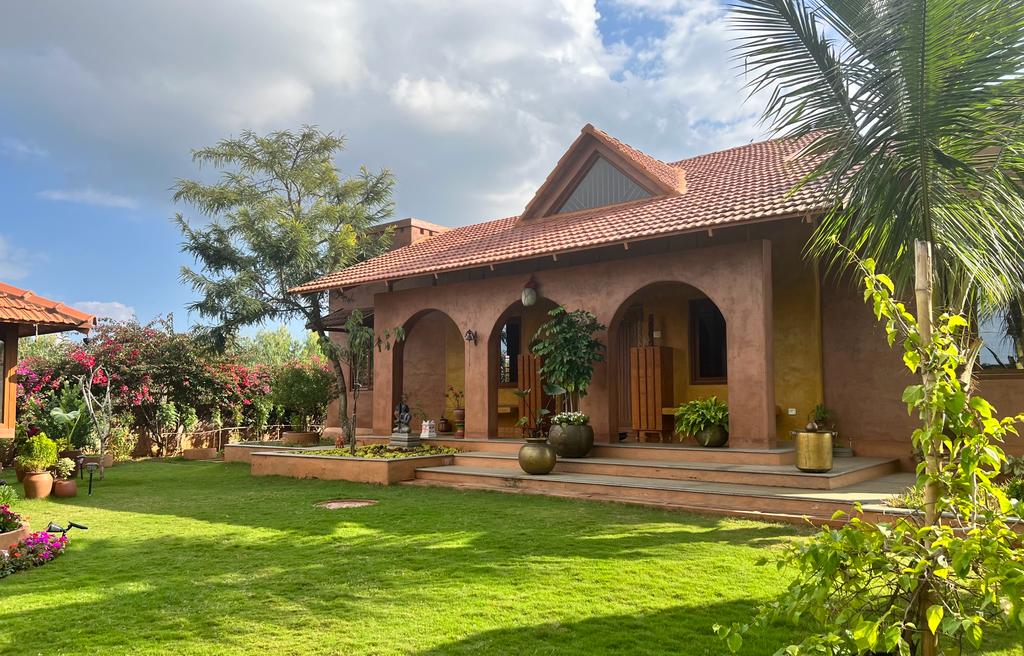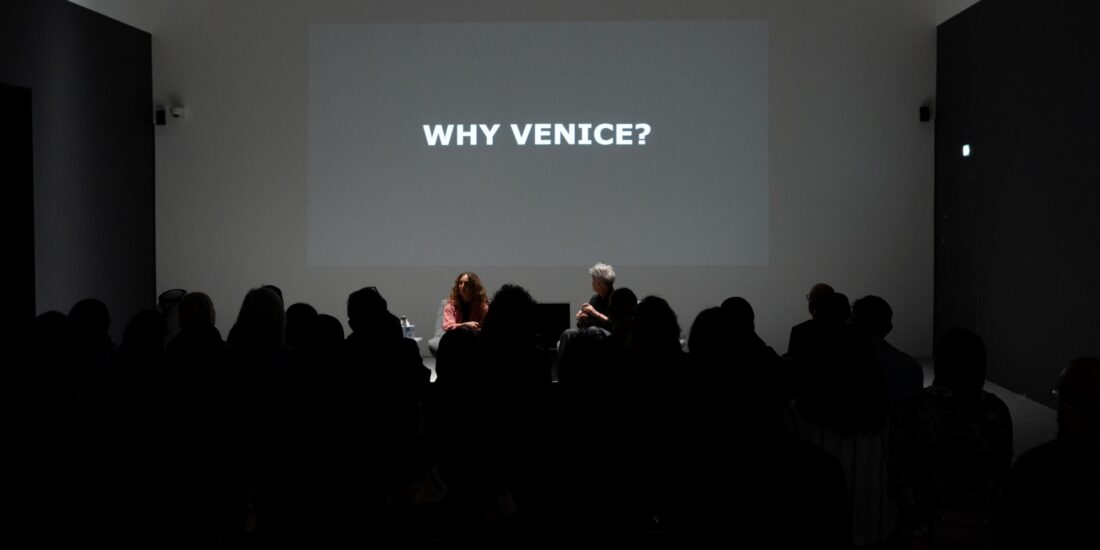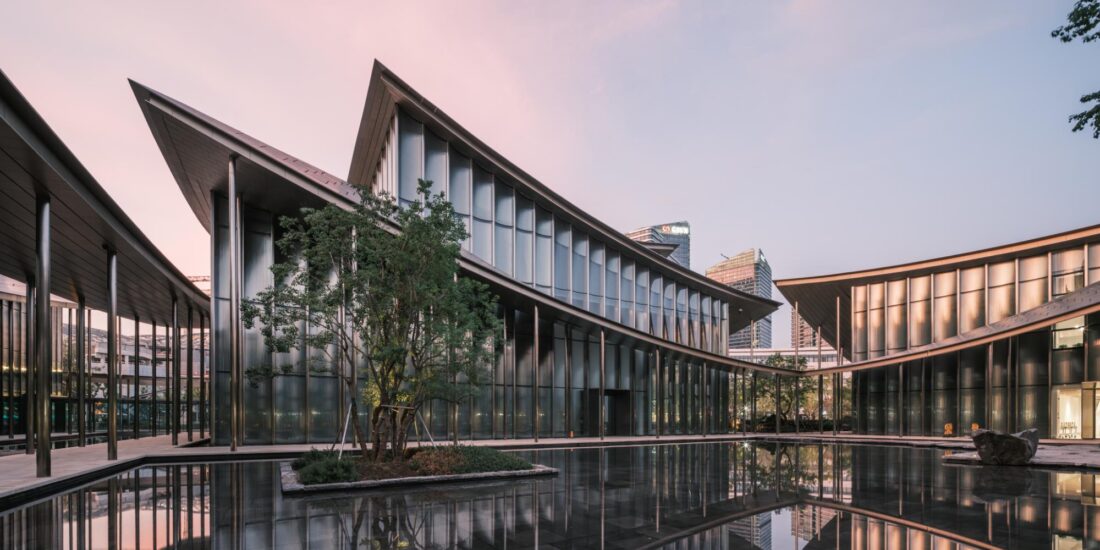Panchatatva: Building with the Five Elements
Away from the city’s noise, a unique home stands within Bengaluru’s greenery. It is called Panchatatva, a name that immediately evokes the five essential elements of nature. To understand this remarkable project better, we sat down with its architect, Deepak Berthalome, for a conversation about a design philosophy that is as simple as it is profound: that a home should not just exist on the land, but be born from it. By Arya Nair
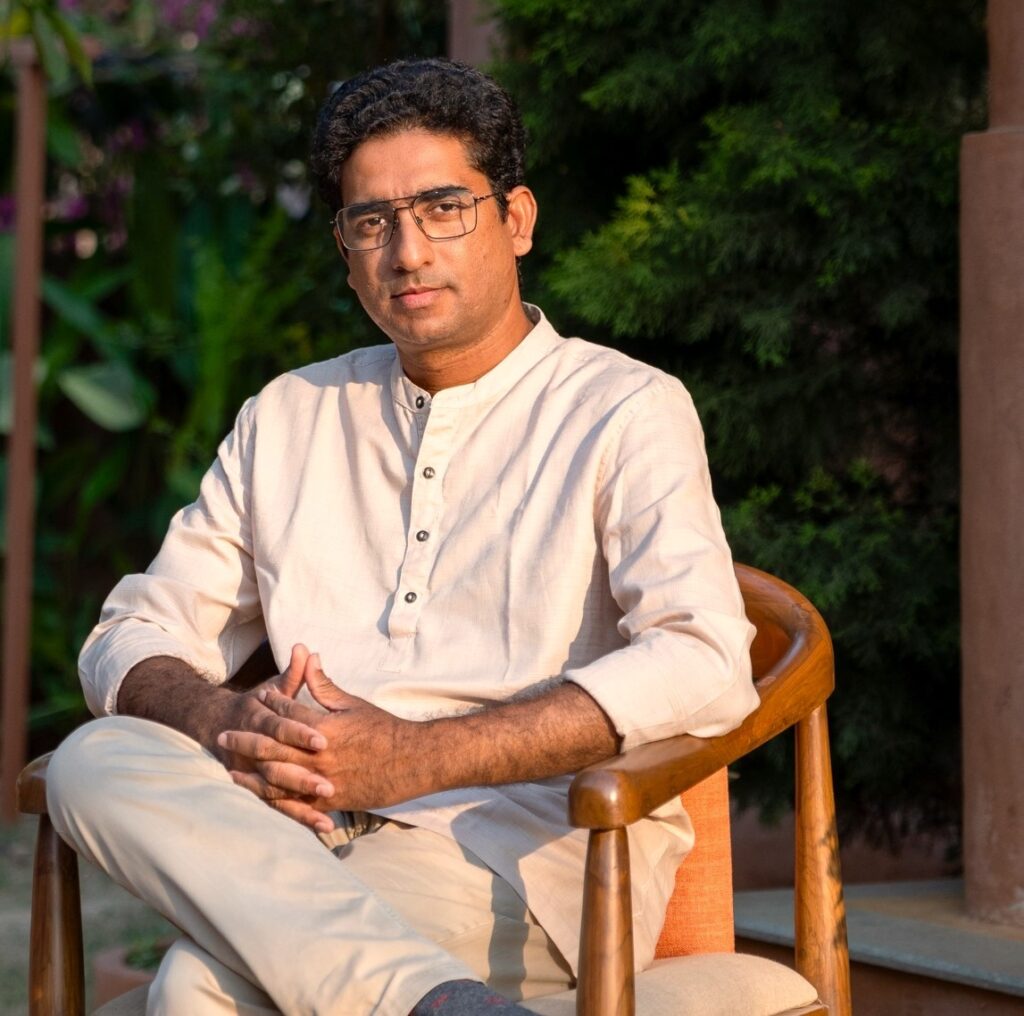
Deepak Berthalome.
The project’s vision was a dream shared between the architect and the client. Having worked together before, they had a strong foundation of trust and a shared goal: to build a home that was “very close to nature.” The site’s lush, green setting served as the perfect canvas. For Deepak, the five elements of earth, water, fire, air, and space were more than just a theme; they were the very principles that shaped every decision, from the choice of materials to the placement of every window. The goal was for the home to be completely intertwined with the land.
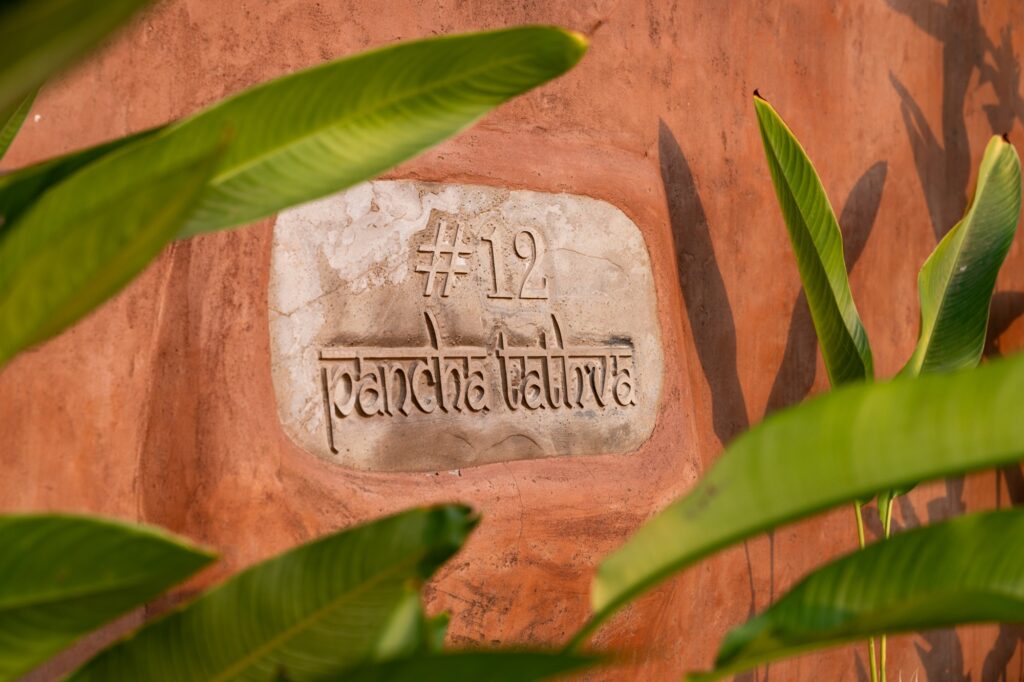 The process of bringing this vision to life was a collaborative effort, with both the client and architect contributing their strengths. The client’s desire for a home that was in harmony with the natural world was a constant guide.
The process of bringing this vision to life was a collaborative effort, with both the client and architect contributing their strengths. The client’s desire for a home that was in harmony with the natural world was a constant guide.
“We knew each other’s strength and vision and that clarity of thought was very important,” Deepak explained. The design had to be one that would “gel with the atmosphere,” feeling like a seamless part of the surroundings rather than a foreign object placed upon it. This approach led to a home that reflected the five elements not only in its structure but also in its interiors, creating a holistic and immersive experience.
An Urban Village
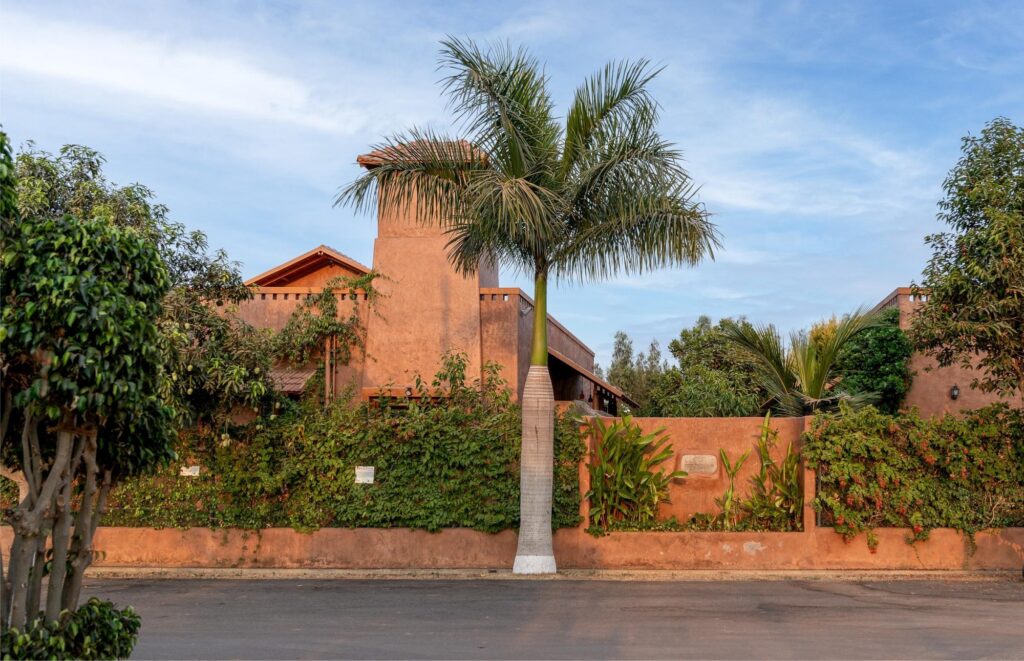 This home is a living example of the idea that a building can be born from the land and yet provide a modern life. Deepak calls it an “urban village,” a place where professionals can live a life connected to the land without giving up the comforts and conveniences of city life. This dual identity, being both off-grid and fully functional, was a core challenge. The home needed to be self-sufficient, but it couldn’t feel like a compromise.
This home is a living example of the idea that a building can be born from the land and yet provide a modern life. Deepak calls it an “urban village,” a place where professionals can live a life connected to the land without giving up the comforts and conveniences of city life. This dual identity, being both off-grid and fully functional, was a core challenge. The home needed to be self-sufficient, but it couldn’t feel like a compromise.
When asked about the home’s self-sufficiency, Deepak explained that it’s a standalone system. A comprehensive rainwater harvesting and recycling system makes the home independent of external supply. The water is completely used and recycled, ensuring a continuous and reliable source. For food, gardens allow residents to grow their own vegetables, making the home self-sufficient in that regard as well.
 The project also accounts for modern work culture. “They can even work from home,” Deepak noted. The design includes dedicated spaces for this, so “until it is required, you need not travel to the city.” The home is built to be a self-sustained community, capable of providing for its residents’ needs for power, food, water, and work. “It is a stand-alone system,” he reiterated, “without compromising any of the luxuries.”
The project also accounts for modern work culture. “They can even work from home,” Deepak noted. The design includes dedicated spaces for this, so “until it is required, you need not travel to the city.” The home is built to be a self-sustained community, capable of providing for its residents’ needs for power, food, water, and work. “It is a stand-alone system,” he reiterated, “without compromising any of the luxuries.”
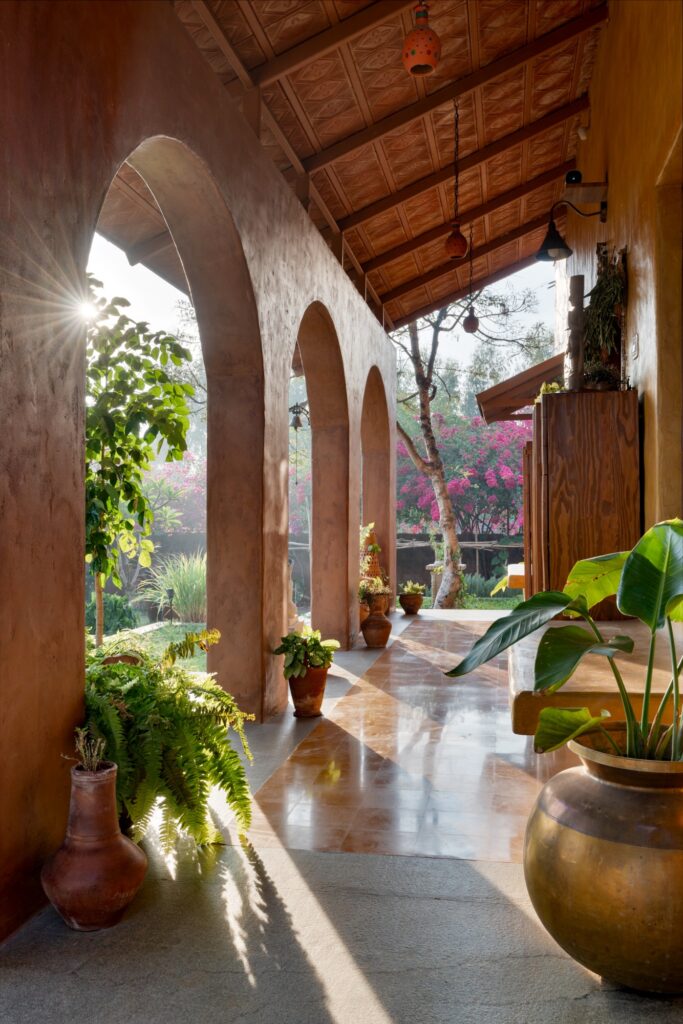 One of the most striking aspects of the house is its commitment to using its immediate environment. The home is built primarily from mud concrete blocks, a bold and revolutionary choice in an age of steel and cement.
One of the most striking aspects of the house is its commitment to using its immediate environment. The home is built primarily from mud concrete blocks, a bold and revolutionary choice in an age of steel and cement.
The mud concrete blocks were made on-site using soil from the property. This was a strategic choice, especially as construction took place during the peak of the pandemic, which eliminated the need for transportation and ensured the project could continue with local labour.
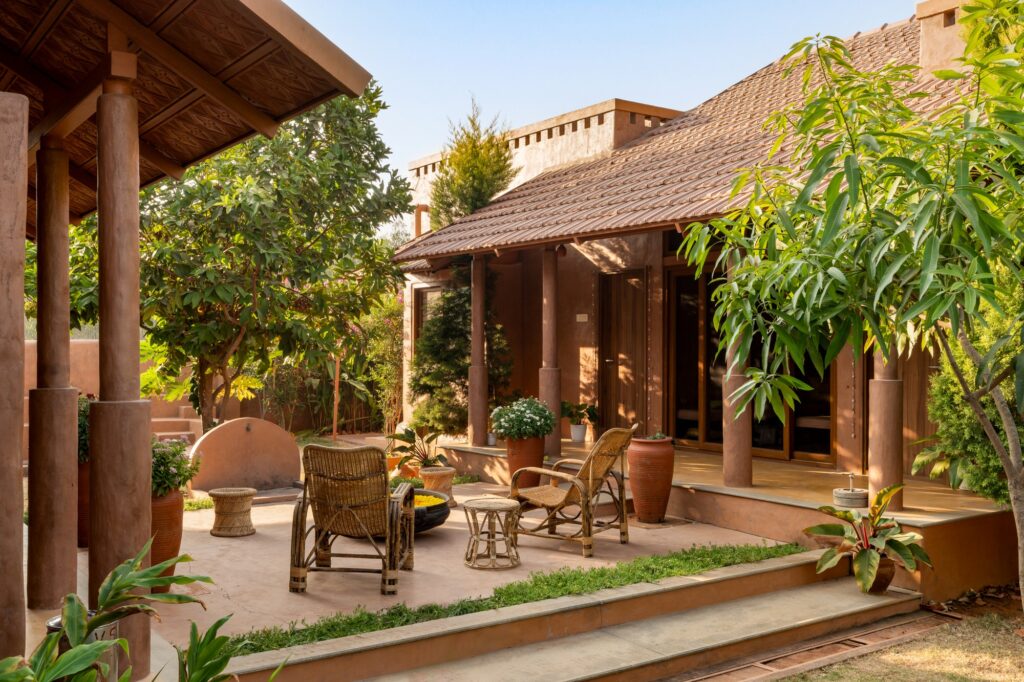 “This mud concrete block is basically developed from the soil from the same site,” Deepak explained, “and done with simple moulding plants, with normal labour, with sun dry. So, it is the simplest model which can be done to make a block.”
“This mud concrete block is basically developed from the soil from the same site,” Deepak explained, “and done with simple moulding plants, with normal labour, with sun dry. So, it is the simplest model which can be done to make a block.”
This choice of material also has a practical benefit: the mud acts as a natural insulator, keeping the house cool in the summer and warm in the winter, reducing the need for artificial heating or cooling. It allows the house to “breathe,” retaining the atmosphere and preventing extreme temperatures.
Playing with all five elements
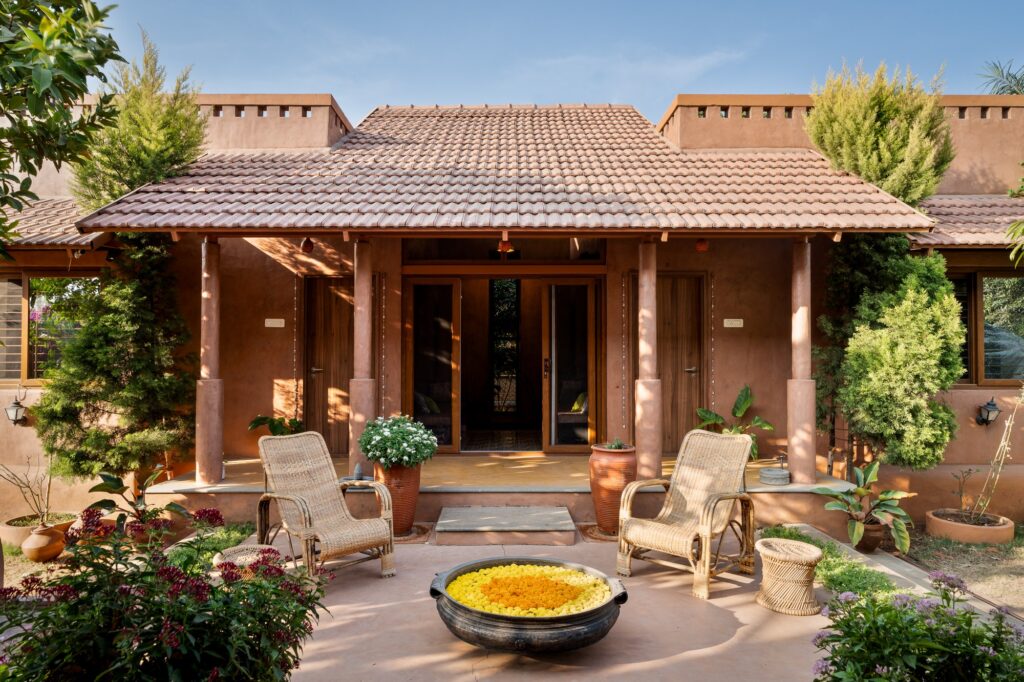 Panchatatva is a celebration of all five elements. The element of fire, represented by light and heat, is captured through the home’s thoughtful orientation.
Panchatatva is a celebration of all five elements. The element of fire, represented by light and heat, is captured through the home’s thoughtful orientation.
Most of the house is open to the north and east, allowing it to soak up the gentle morning sun without a lot of heat. The double-height spaces and a large bay window are designed to welcome the morning light, making the interior feel bright and alive throughout the day. Only the southwest corner is a closed, blocked room, protecting the home from the harsh afternoon sun. “Working with the sun was vital,” Deepak said.
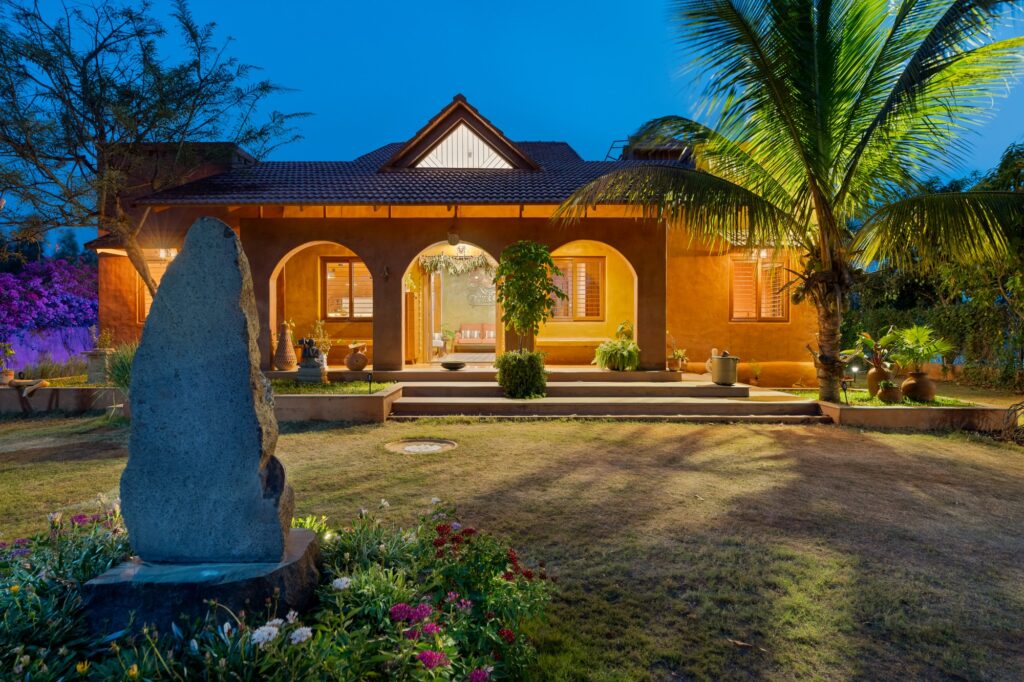 The element of water is a central part of the design of Panchatatva. A beautiful “kund,” or traditional step-well, is prominently featured. This water body plays a vital role in cooling the air. As the wind moves across the water, it naturally cools down before circulating through the home, keeping the central spaces comfortable and fresh.
The element of water is a central part of the design of Panchatatva. A beautiful “kund,” or traditional step-well, is prominently featured. This water body plays a vital role in cooling the air. As the wind moves across the water, it naturally cools down before circulating through the home, keeping the central spaces comfortable and fresh.
This kund is also a gathering place, a modern take on the traditional Indian practice of sitting around a central point to talk and connect. It brings family and friends together, offering a serene spot for conversation and quiet moments. “It’s a place where they get together and talk,” he noted.
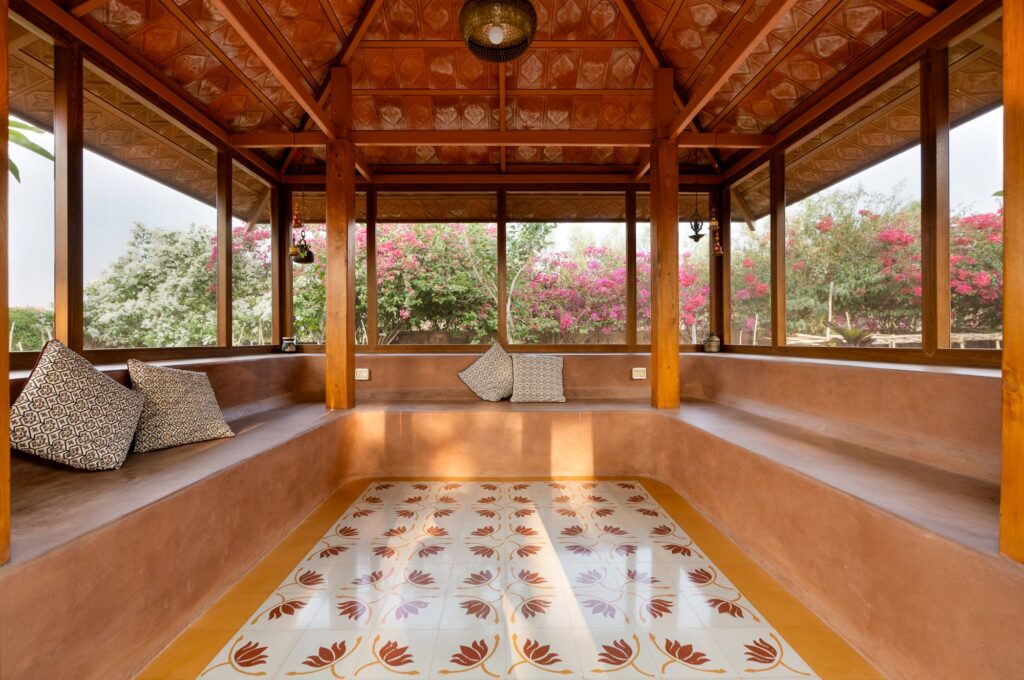 The team faced a unique challenge with the gazebo: mosquitoes. However, they had a solution. Deepak referred to the decision to use a fine, nearly invisible mesh in the gazebo instead of traditional glass. “We also had to make sure that it did not look like a cage,” he recalled. “We had a lot of discussions but eventually we could get it in the most ideal way.” \The mesh is so subtle that you barely notice it, even when you’re sitting inside. It allows the space to remain open and connected to nature, offering a peaceful retreat where one can relax without being bothered. This successful model was even adopted by others in the community. The gazebo’s design, with its smaller footprint and spreading roof, is like a “tree format” that helps people stay comfortable in all climates.
The team faced a unique challenge with the gazebo: mosquitoes. However, they had a solution. Deepak referred to the decision to use a fine, nearly invisible mesh in the gazebo instead of traditional glass. “We also had to make sure that it did not look like a cage,” he recalled. “We had a lot of discussions but eventually we could get it in the most ideal way.” \The mesh is so subtle that you barely notice it, even when you’re sitting inside. It allows the space to remain open and connected to nature, offering a peaceful retreat where one can relax without being bothered. This successful model was even adopted by others in the community. The gazebo’s design, with its smaller footprint and spreading roof, is like a “tree format” that helps people stay comfortable in all climates.
 The kund also serves a social purpose. “It was a smaller version of it and they also wanted to place it between the two blocks,” Deepak explained. The placement in the centre allows for a comfortable gathering space in the afternoon and evening when the sun doesn’t hit it. It’s a gathering space where even kids feel engaged with the water and fishes.
The kund also serves a social purpose. “It was a smaller version of it and they also wanted to place it between the two blocks,” Deepak explained. The placement in the centre allows for a comfortable gathering space in the afternoon and evening when the sun doesn’t hit it. It’s a gathering space where even kids feel engaged with the water and fishes.
Beauty of Context
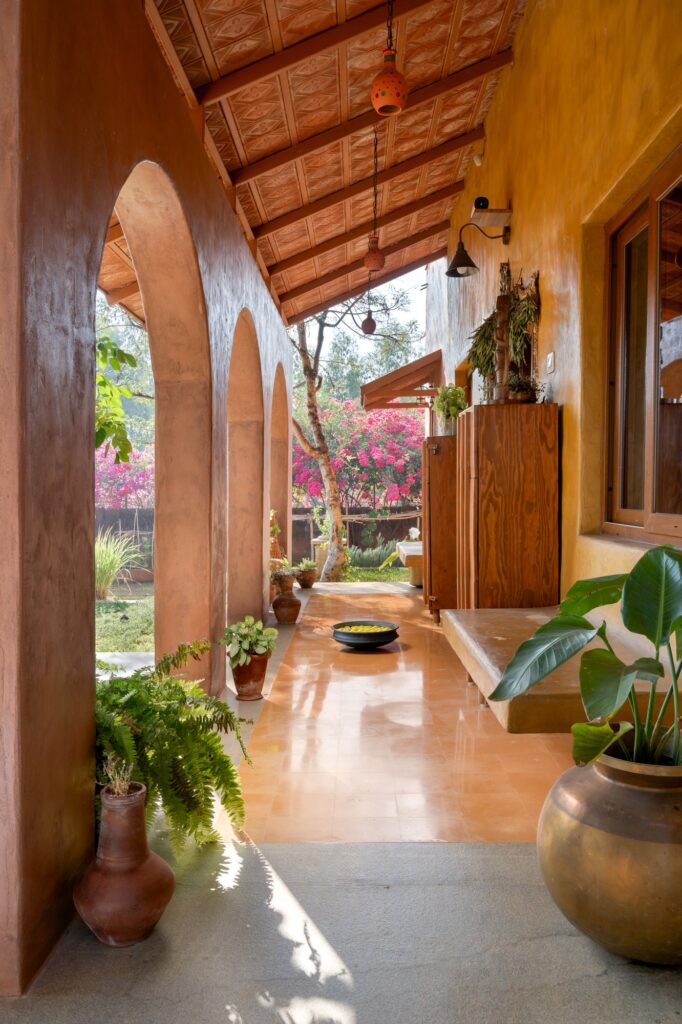 Panchatatva is more than a building; it is a philosophy in built form. It is a reminder that the most beautiful designs are often the simplest ones, and that a home’s true value lies in its connection to the earth and the life it supports.
Panchatatva is more than a building; it is a philosophy in built form. It is a reminder that the most beautiful designs are often the simplest ones, and that a home’s true value lies in its connection to the earth and the life it supports.
“The one thing I hope people take away from Panchatatva,” he said, “is the beauty of context.”
He explained that the project’s true essence lies in understanding what is available locally, things like the soil, the climate, and the light, and making complete use of it. By working with the environment and celebrating its natural strengths, you can create a residence that is not only stunning but also sustainable and deeply meaningful.
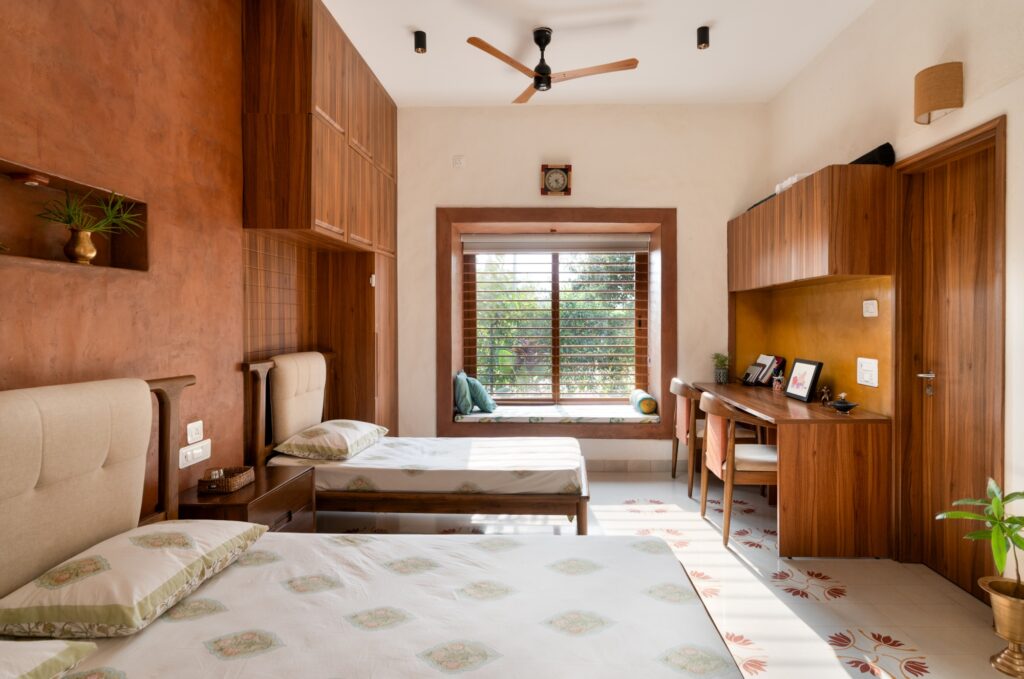 Panchatatva’s sustainability is closely linked to minimalism. It’s about “using less of a lot of things,” from materials to transportation and effort. This focus on minimalism extends to the building’s layers. “We do not require too many layers. No false ceiling, no additional layers,” Deepak noted. This approach not only saves resources but also reduces the chances of things going wrong in the future. “The more things there are, the more chances of things going wrong in future is also more,” he explained. By keeping the built nature minimal and allowing the vegetation to grow, the house contributes to the overall environment in the long run.
Panchatatva’s sustainability is closely linked to minimalism. It’s about “using less of a lot of things,” from materials to transportation and effort. This focus on minimalism extends to the building’s layers. “We do not require too many layers. No false ceiling, no additional layers,” Deepak noted. This approach not only saves resources but also reduces the chances of things going wrong in the future. “The more things there are, the more chances of things going wrong in future is also more,” he explained. By keeping the built nature minimal and allowing the vegetation to grow, the house contributes to the overall environment in the long run.
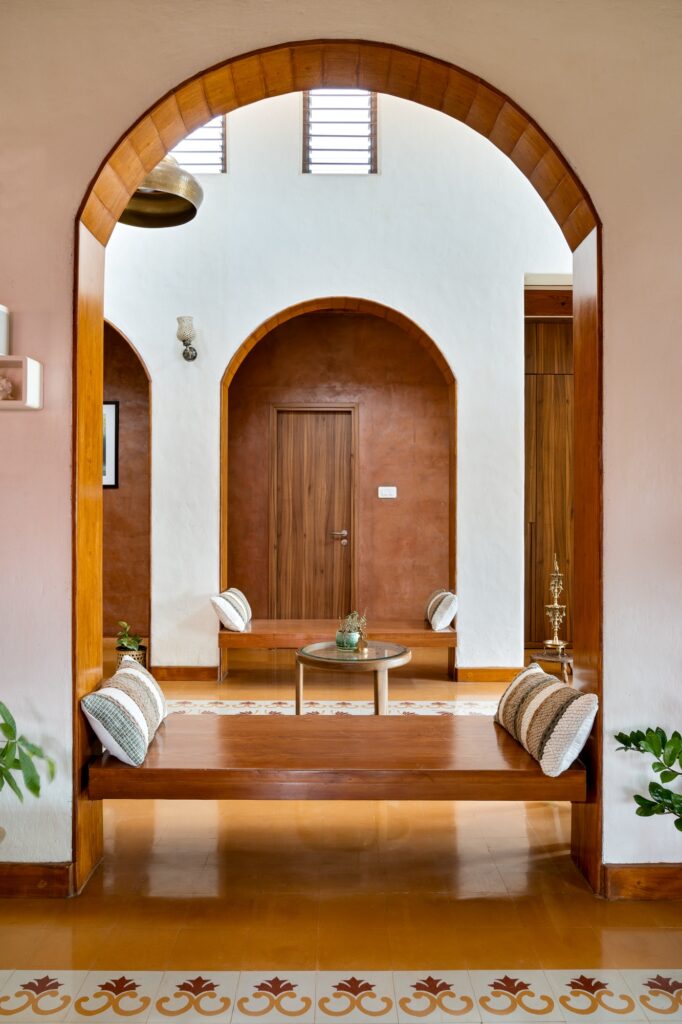 Deepak’s final advice for someone starting a sustainable design journey is to first make a conscious choice to do so. “The context of the environment which is where you are planning that project is very essential,” he emphasised. The goal is to “go deeper and truly explore and make complete use of the strength of what is available.”
Deepak’s final advice for someone starting a sustainable design journey is to first make a conscious choice to do so. “The context of the environment which is where you are planning that project is very essential,” he emphasised. The goal is to “go deeper and truly explore and make complete use of the strength of what is available.”
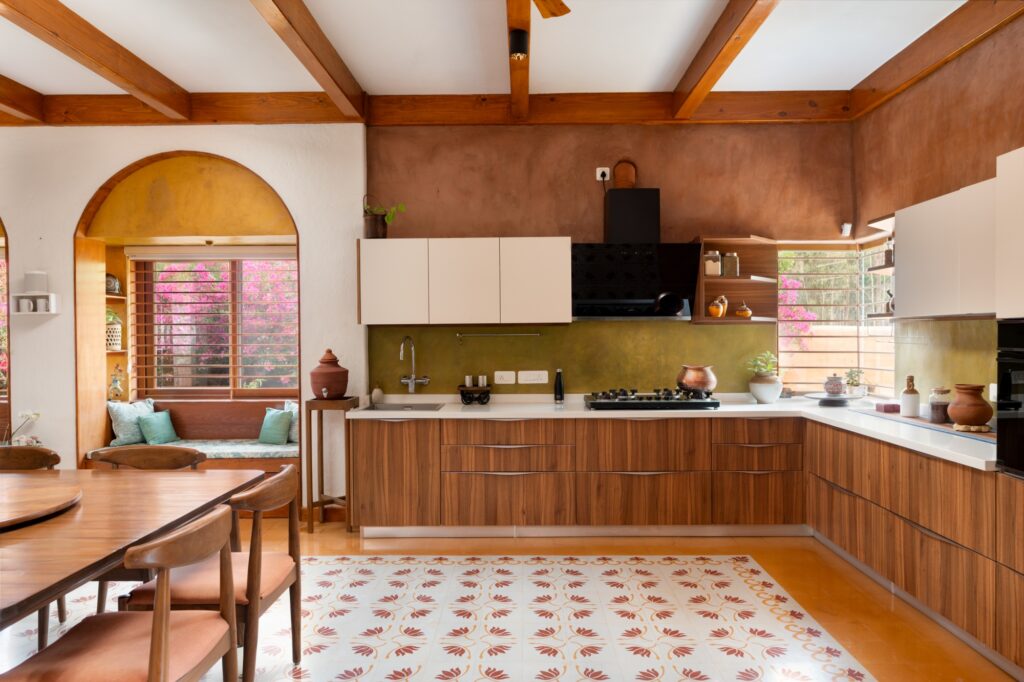 In essence, Pachatatva is about applying more thought before taking any action. Panchatatva stands as a powerful example of this philosophy; a home that proves that in a site context, less is more.
In essence, Pachatatva is about applying more thought before taking any action. Panchatatva stands as a powerful example of this philosophy; a home that proves that in a site context, less is more.

